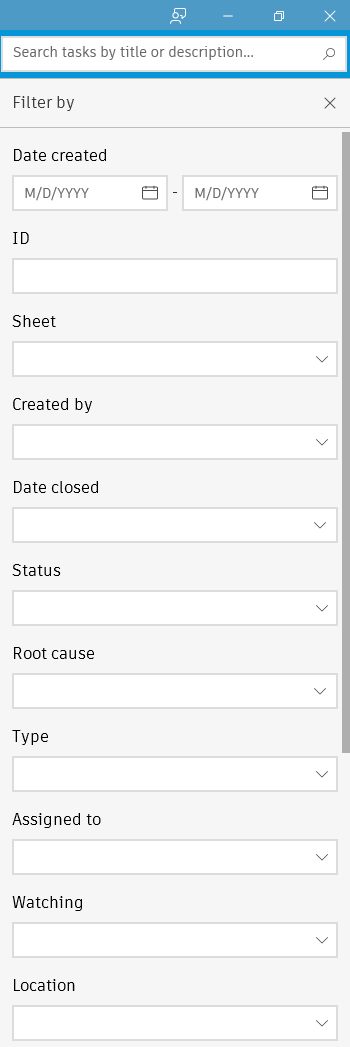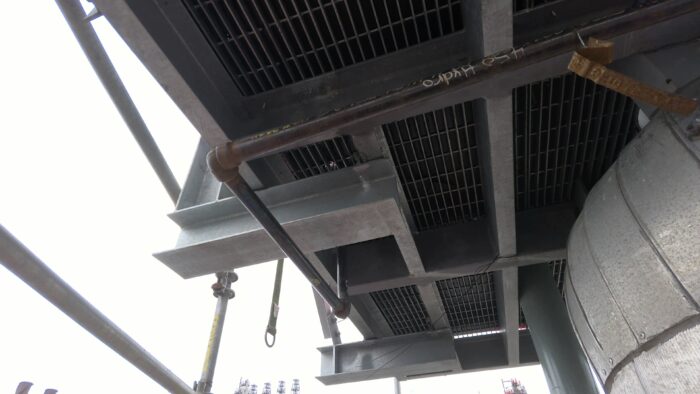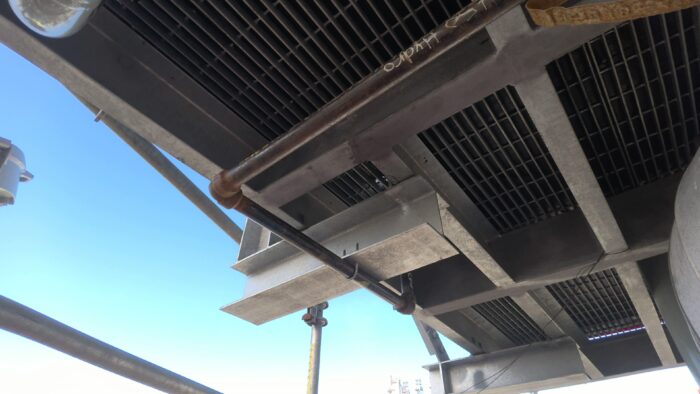By Jesse DeMooy, Sr. Piping Designer with Linda Ricard
Published January 2025
Project managers overseeing high-stakes projects across refineries, industrial plants, or advanced manufacturing facilities know that miscommunication between project stakeholders can easily derail a job. Communication roadblocks or obstacles often lead to poor quality, safety issues, rework, delayed schedules, and mistakes with costly consequences.
The key to alleviating these risks is clear, concise, and ongoing communications among all project stakeholders in a cloud-based, collaborative environment. This is especially critical when managing the construction phase of a project where all stakeholders need access to real-time project data to head off any issues in the field.
Using cloud-based field tracking (CBFT) systems, such as PlanGrid or AutoDesk, owners, engineers, subcontractors, and constructors can easily access the information they need from a central digital repository consisting of thousands of documents to review.
CBFT Tracking
These documents could include:
• Project Plans, Markups, and Reports
• Schedules
• Drawings, Diagrams, Illustrations, Data Sheets
• Specs, and Standards, ISOs, P&IDs
• Punch Lists
• Current Issues
• Risks and Mitigation Strategies
• Photos
• Videos
• Tasks and Status / Priority Level of Each Task
• Forms, Files, and Documents
With these CBFT systems, engineers can instantly compare a drawing on their iPad or Android while in the field and see issues that need to be fixed or verify that installations are installed correctly.
The system’s digital library gives project owners the ability to log into the system and see a summary of all of the tasks that are currently “open” versus reaching out to the engineering team to get the same information.
Turnaround projects, in particular, reap the benefits of CBFT systems where reducing just a few days of field walks results in considerable cost savings.
CBFT Perks
A CBFT system can accommodate thousands of ISOs for multiple projects and units for just one turnaround cycle in a year.
Project engineers set up a system compiled of all the jobs in a turnaround by unit with the unit’s corresponding documents including drawings, line numbers, specs, standards, photos, and reports.
The team then conducts field walks during construction to ensure that each unit is installed as designed and coordinate field questions. Their job is to compare what’s in the field to the design. If they see there are any discrepancies, they then issue a task to fix the issue.
For example, an engineer may note during a field walk, as noted in the pictures below, that a U-bolt was missing on a pipe. Working in a CBFT system, they can simply take a picture of the missing U-bolt with their tablet, upload the photos into the system for an easy reference to where the issue is located, and assign the task as “Open” and assign a priority level amongst other detailed information.
The system then informs all project team members so that the contractor responsible can tag the issue in the system as “In Review” before going out to the site to fix the issue. Once the issue is fixed, the contractor uploads photos of the fix along with detailed information of the fix and changes the task from “In Review” to “Pending.” If engineers can’t tell that the fix has occurred by the photo, they conduct field walk. When it has verified that the issue has been resolved, the engineer changes the status to “Closed.”
TIP: When setting up a CBFT system to support build projects, loading detailed information at the outset is key to reaping the most benefits from the system. This includes providing specific information in tags and tasks such as tagging line numbers per drawing to easily view all of the ISO’s for that line number without having to hunt for the information.
In CBFT systems, project managers, engineers, or field construction personnel can filter all of the tasks located in the same vicinity. Organizing all the tasks by location results in more efficient field walks. This saves time and money and reduces potential safety risks.
For example, project team members no longer have to climb to the top of towers to verify if a missing plug on a valve has been installed. The uploaded photo tells them all they need to know.
CBFT systems also interact with drawings to open a drawing number before notifying the responsible party to fix construction issues in real time, eliminating the need for a traditional punch list in an Excel spreadsheet.
Four Challenges to Using Cloud-Based Field Tracking (CBFT) Systems Prior to Project Launch
1. Collective Buy-In. One of the biggest challenges to implementing a CBFT system is stakeholder alignment and collective buy-in. Everyone has to commit to using the collaborative software for the system to work properly and to realize the benefits from a project schedule, cost, and quality standpoint.
2. Software Licensing. Everyone on the project team has to agree to invest in the software. This requires that all stakeholders pay the upfront costs to secure the software license to use the technology. As the collaborative system can be used for all other projects going forward, the initial cost will save money in the long run.
3. Learning curve. Once all stakeholders are aligned and ready to start working in a cloud-based collaborative environment, the entire project team has to learn how to work in the new system, which involves minimal training time (4-8 hours). This is why project teams should allocate training before project construction to get everyone up to speed.
4. Technology. To work collectively in the system, all team members must have an iPad or Android tablet, supported web browser, and Internet connection to interact/talk live in real time while looking at the units when walking the job site. This includes investing in cellular services to use in the industrial facility. The efficiency of speed comes in when all team members are identifying, working on, and verifying fixes in the field and communicating the information in real time via their cellular-based tablets.
Summary
A sure-fire way to ensure project success and avoid escalating construction costs on a project is to continually engage all project team members in a virtual collaborative environment across the design and build phases.
Advanced and secure CBFT systems inform constructors and clients in real time of issues in the field. All they have to do is log into the system, whether from the office or mobile device, filter by company name to see all of the “Tasks” along with priority levels to fix any outstanding issues. The task is then considered to be “Closed,” once the engineer has verified that the fix has occurred.
Not only does this improve project performance, but it reduces the potential for cost overruns, multiple field walks, and rework which can all lead to construction delays.
From the office to the field, these advanced field tracking systems continue to rapidly develop the capability to connect 3D animated designs with real-life build applications.





